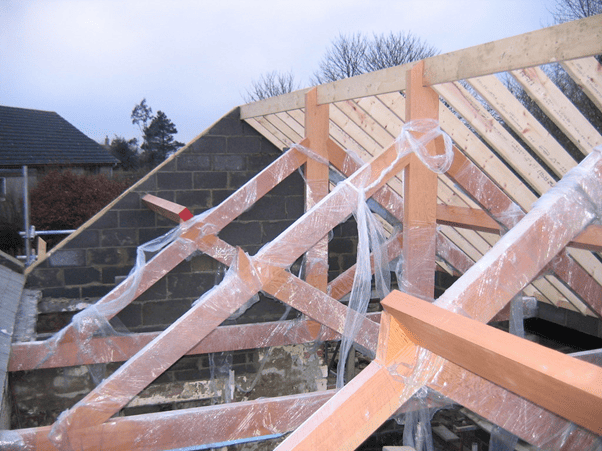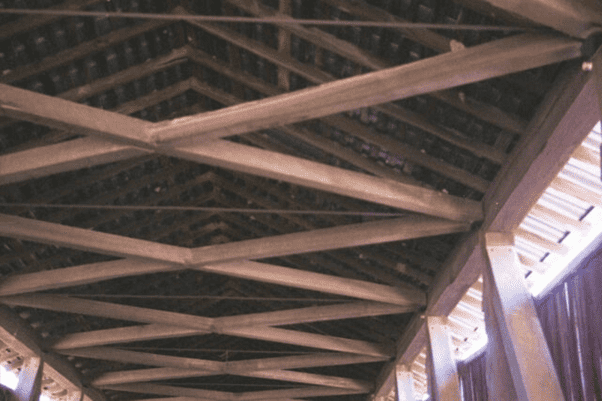Roof trusses are essential components of the roof structure. These timber frames are connected using pegs, bolts or nails and are able to support the whole weight of the roof. This adds up to a significant load. In addition to the roof coverings, they also have to withstand the forces exerted by wind and the extra weight exerted by snow.
Cutting into roof trusses is potentially very dangerous and should not be carried out as a DIY project. It compromises the integrity of the roof structure and weakens its strength. In the worst-case scenario, the roof could collapse and take a lot of the house structure with it.
How Roof Trusses Work
There are many different types of roof truss. Most modern trusses are made from timber that has been kiln-dried and is very lightweight. However, traditional structures such as structural oak beams are also seen in both older and modern properties.
Trusses work because of the strength of their timbers, but this alone is not enough. They are also constructed in a particular shape so that the load is distributed throughout the whole roof structure. This is achieved by all of the connecting elements, including plates, bolts, screws and glue or pegs to fix it together.
There are many different designs, including parallel chord and low profile for flatter roofs, open plan or king post for pitched roofs and inverted or mono a for single-pitch roofs.
Repairing a Roof Truss
The repair and alteration of a roof truss should only be carried out by trained and experienced experts such as https://www.timberpride.co.uk/oak-products/structural-beams/ to ensure the safety of the property is not compromised.
Repairs and replacements may be needed because of water penetration, for example, because a slate has been missing for some time. Damage can also be caused by insect attack, and this is most common in older properties that do not have sufficient damp protection. Damp and insect attack can cause the failure of old mortise and tenon joints and of wooden pegs which can cause the truss to fail.
Repairs need to be carried out quickly before the damage spreads to ceilings and other parts of the property. It will usually involve removing a part of the truss or the entire truss if the damage is extensive. Then a new timber resin splice will need to be inserted.


